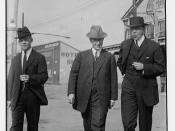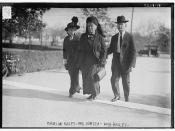Almost two hundred years ago (1788) a number of survey lines were drawn, "setting in motion the series of events that would lead to the establishment of the city of Hamilton" (Dear, Drake & Reeds, 1987, p. 3). Three decades later, the lot defined by these lines appeared as the townsite on an early map of Hamilton (figure 1). The town site at Hamilton was "neither unique nor imaginative" (Dear, Drake & Reeds, 1987, p.99) and it was said that there was little to distinguish it from others around it, each aspiring to "leap into urban maturity" (Dear, Drake & Reeds, 1987, p. 99). One hundred years later, however, the city of Hamilton was a thriving industrial metropolis and had undergone significant change (Dear, Drake & Reeds, 1987).
Hamilton is situated in the eastern part of the Great Lakes basin of North America, at the head of the lowest of the Great Lakes, Lake Ontario (Henley, 1995).
Strategically situated on Lake Ontario, the city of Hamilton is centrally located in Canada's manufacturing heartland. The city has a consumer market area of over 120 million people within a five hundred mile radius (Bailey, 1983). This paper will examine the historical growth and development of the city of Hamilton. Over the years Hamilton has witnessed many changes in patterns of urban growth, employment and land use. Hamilton and area has gone through many changes since the first people saw the area (Dear, Drake & Reeds, 1987).
First Inhabitants
The first inhabitants of the area were thought to be a comparatively large, flourishing and organized Indian population. The Indians crossed the area, wearing paths on the escarpment and along the beach below. Other than their campsites, the Indians were said to have left no mark on the terrain (Bailey, 1983).
The Loyalists were...


